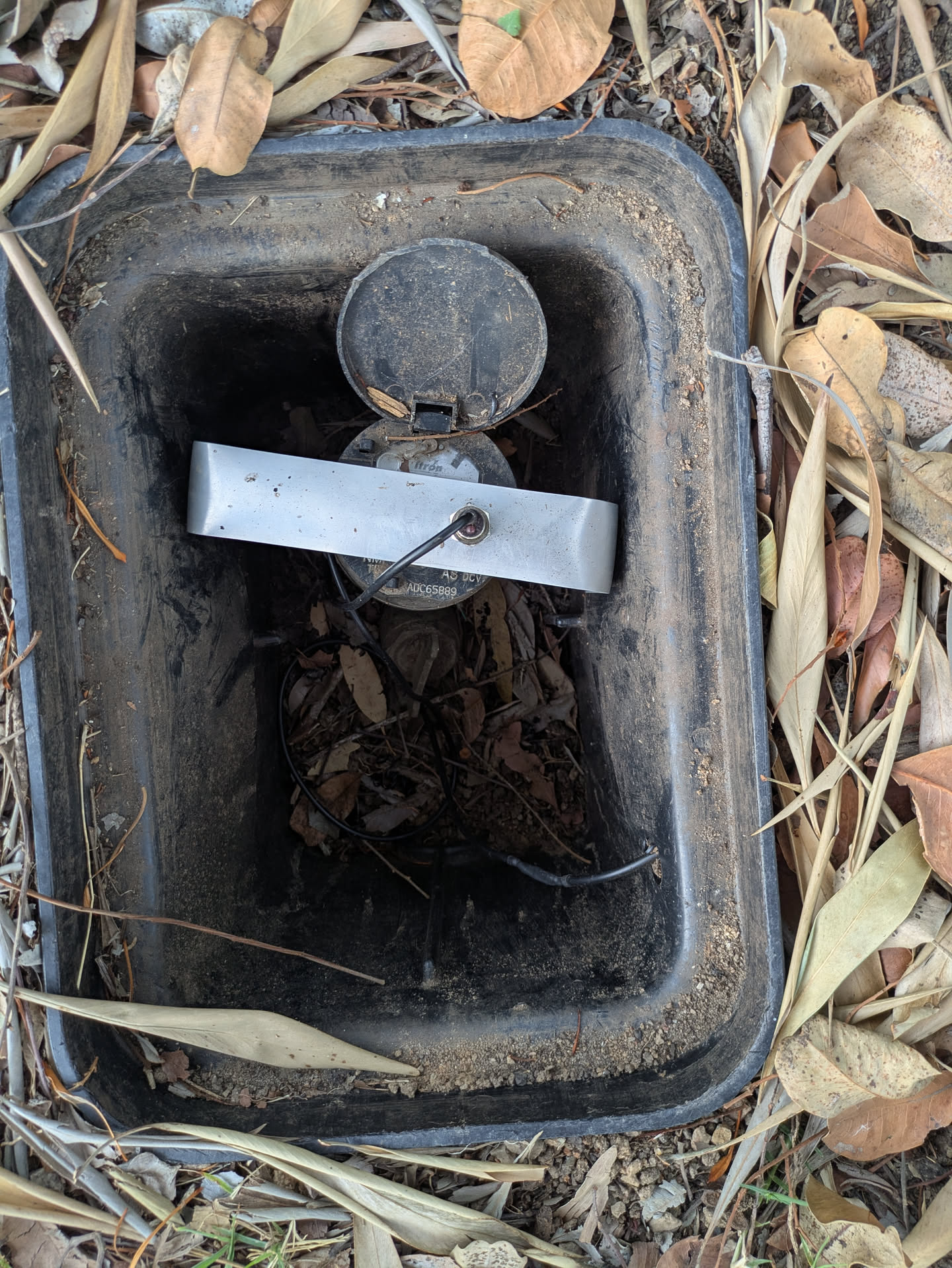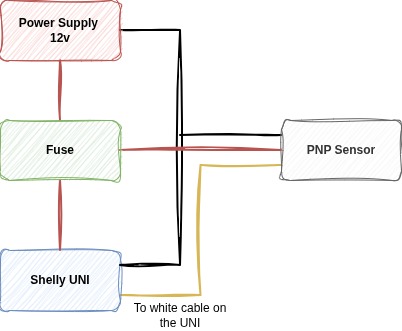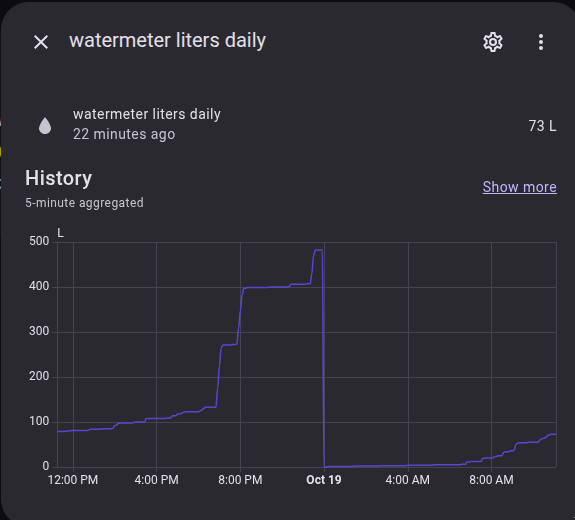Version 2… we moved
We moved… Devastating as stuff like the water meter didn’t meet the priority in the new house. Until now!
Same rules apply as before:
- No batteries
- Reuse what we already have
The only difference this time around is that the new water meter is really far away, doesn’t flood, and the meter itself is closer to the lid.
Same idea though - a piece of aluminium just to hold the sensor in place but not obstruct ‘the man’ from reading the meter.
The last is important as now we cannot use the existing sensor as it’s simply too big.
Induction sensor
Previously we had a large PNP sensor, which had a large detection range but that simply won’t fit at our new house.
Luckily I had also ordered another sensor at the time which is smaller and came highly recommended from AliExpress - ABILKEEN. The one I bought specifically is no longer available, but the brand still is. For example: AliExpress
Just note, I did order a PNP NO (Normally Open) but received a NC (Normally Closed). Not to worry, just means that there’s always a constant voltage for the signal, instead of only receiving a voltage when the sensor is active. We just need to account for that.
Typically a NC sensor is associated with more power usage, but comparing it to the larger one we used to use, it’s similar anyway.
The run is also a lot longer than previous, from about 6 meters to over 25 meters. Due to the distance, voltage drop is a factor, but will depend heavily on the cable quality you use. A 3-core cable from AliExpress I only lose ~1V so we get a constant read of 11V - good enough for what we’re doing.
Shelly Uni
Doesn’t change from our previous setup.
The only thing I have changed is instead of using an automotive fuse holder, we switched it to one I have spare from Christmas lights Hexfuse2. It’s essentially the same as before, just not as dodgy. The negative is common and the positive line is what’s run through the fuse.
I like it better as it just better in our housing, and even has a light which activates when the fuse blows.
The fuse is mainly here to protect the power supply from the sensor out the front of the house in case it shorts or an animal chews it.
My wiring looks like:
The UNI really doesn’t have to be behind the fuse, I’ve done it just as it’s easier wiring and they’re cheap.
Shelly Setup
Again nothing changes from the previous setup.
EXCEPT, the sensor is always on, so we need to invert the logic in Home Assistant, so our automation now looks like the follow but we trigger when the voltage drops below about half:
alias: generate watermeter pulse
description: ""
trigger:
- platform: numeric_state
entity_id:
- sensor.watermeter_adc
below: 6
condition: []
action:
- service: input_boolean.toggle
metadata: {}
data: {}
target:
entity_id: input_boolean.watermeter_pulse
- delay:
hours: 0
minutes: 0
seconds: 0
milliseconds: 100
- service: input_boolean.toggle
metadata: {}
data: {}
target:
entity_id: input_boolean.watermeter_pulse
mode: single
That’s it, we’re back in action.



